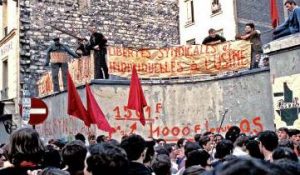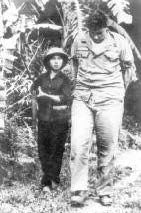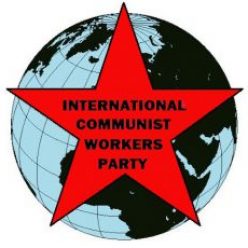It is Right to Rebel and Better to Turn Rebellion into Communist Revolution

Fifty thousand students marched against police brutality in Paris on May 7, 1968. The march quickly turned into a daylong battle in the Latin Quarter (Left Bank), home to big Paris universities and tens of thousands of students.
Thus began a week-long worker-student uprising. It would have been a revolutionary situation — if there had been a revolutionary communist party capable of seizing the moment.
Cops (“les flics”) attacked the students with tear gas. The students fought back with paving stones and Molotov cocktails. They responded to orders to disperse with chants of “long live the Paris Commune!” (See p. 2)
It all started on March 22, when radical working-class students at Nanterre University occupied the university council chambers to protest class discrimination in education. The struggle continued, and on May 2 the administration closed Nanterre.
On May 6, students from Nanterre and the elite Sorbonne joined forces. The vicious French paramilitary police (CRS) attacked. In the pitched battle that followed, hundreds were injured on both sides.
Sporadic fighting continued until the night of May 10. Then students threw up barricades (the first in Paris since 1944) and chased the cops out of the Latin Quarter. Many young workers joined the students. One city worker, for example, showed the students how to use a jackhammer to dig up paving stones.
On Monday, May 13 a million people marched in Paris, at one point singing the Internationale.
The next day aerospace workers in Nantes occupied the Sud-Aviation factory and locked the management in their offices. They were soon followed by Renault autoworkers in Rouen and then Paris. By Thursday, workers had occupied over fifty factories all over France.
On Monday, May 20, ten million workers were on strike – out of fourteen million in all. It was the biggest general strike in European history. And they weren’t on strike just for reforms. One worker told the press that the rebels wanted “a new society.”
“Toward a Mass Leftism”
Workers and students held meetings in the factory halls and universities they had occupied. These echoed the local assemblies of the Paris Commune and the soviets in Russia in 1917.
A Council for Maintaining the Occupations called on May 22 for a federation of Workers’ Councils to become “the sole deliberative and executive power over the entire country.” They envisioned re-starting railroads, print shops and other sectors of the economy “under workers’ control” as the basis for this power. They thought seriously about how to requisition and distribute food and other necessities using vouchers instead of money.
A survey taken immediately after the crisis found that 20% of the French would have actively supported a revolution. About a third would have fought a military intervention.
Clearly, this revolutionary moment demanded communist leadership. But the rotten so-called ‘Communist’ party (PCF) used its mass base to sabotage the movement.
Amidst the rebellion, the PCF-controlled CGT union exposed itself as “a mechanism for integrating the workers into capitalist society” and “the main protection of this shaken capitalism.” For example, when students marched to factories they often found the gates locked and guarded by CGT thugs.
President De Gaulle fled to Germany on May 29. He met with General Massu (a notorious Algerian War torturer) who assured him he had the support of the brass. But most of the troops were young conscripts. The government couldn’t rely on them.
De Gaulle relied instead on the PCF and reforms like a 35% rise in the minimum wage to get things under control. He proposed new elections, and the PCF agreed. The new young communist groups were not yet ready to step up.
Particular grievances provoked the May 1968 rebellion. But to find the causes we must look around the world. 1968 was a year of rebellion (see below). French workers and students saw what was happening and drew the lesson that “it is right to rebel.”
A group of young Parisian communists declared in June 1968: “The world revolution is now knocking on the doors of the developed capitalist countries…. What counts is that every day the proletarian revolutionary communist party is built in the struggle.”
The same is true today. As protests and rebellions break out around us, we must always bring communism to the fore. Our everyday discussions, social activities and struggle must help us prepare to mobilize for communism.
We have a world to win!

1968: A Year of Rebellion
Fifty years ago, intense struggle raged around the world. 1968 was the high point of more than a decade of mass rebellions that began with anti-imperialist uprisings in Asia and Africa against French and British colonialism.
The political and economic “golden era” of capitalism had ended. The imperialist victors of World War II were exhausting the advantage they had wrested from mass devastation and close to 80 million deaths.
Globally, the rate of profit was falling – and with it the political order. Masses were questioning capitalism.
In the US, uprisings against racism and the Vietnam War ranged from walk-outs of Mexican-American students in Los Angeles to the Dodge Revolutionary Union Movement among black auto workers in Detroit. Following the April assassination of Rev. Martin Luther King, Jr., rebellions rocked cities across the US and surged among active-duty US soldiers and sailors.
In Mexico City, struggles against racism and Apartheid at the 1968 Olympics led to mass student protests against exploitation and repression.
Many were questioning socialism, too. They saw that Russia was state-capitalist (or social-imperialist). Chinese students stopped Russian supply trains on their way to Vietnam, seeing them as a means to coopt the revolutionary struggle there.
When the Soviet imperialists sent troops to suppress the “Prague Spring” uprising in Czechoslovakia, Czech youths fraternized with the soldiers. As protests spread, including general strikes in France and Austria, some troops defied orders to disperse crowds.
During the Chinese Cultural Revolution, starting in 1966, masses mobilized against Soviet socialism and capitalist roaders in China itself. Many took up the cause of moving quickly toward communism.
In France in May 1968, as elsewhere, mass anti-war and anti-imperialist movements transformed the political landscape and gave rise of a generation of activists.
What inspired these uprisings? The Vietnamese peasant army in home-made sandals that was taking on – and defeating! — the US army, the mightiest military machine the world had ever seen.
Everything we do is connected to the working-class struggle internationally. That’s why Red Flag is so important today. This newspaper is written, developed and distributed by communists and friends in many countries.
As mass movements explode around the world today, the International Communist Workers’ Party that we’re building today must prepare to lead the way to communist revolution.


